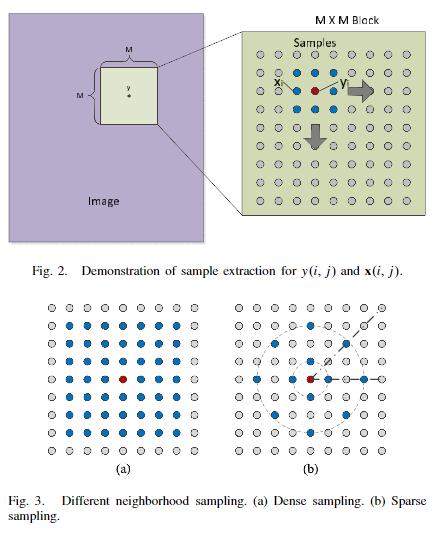 |
Compressed Image Quality Metric Based on Perceptually Weighted Distortion
[PDF]
Sudeng Hu, Lina Jin, Hanli Wang, Yun Zhang, Sam Kwong, and C.-C. Jay Kuo IEEE Transactions on Image Processing, Vol.24, No.12, pp.5594-5608, Dec. 2015 |
|
Objective quality assessment for compressed images is critical to various image compression systems that are essential in image delivery and storage. Although the mean squared error (MSE) is computationally simple, it may not be accurate to reflect the perceptual quality of compressed images, which is also affected dramatically by the characteristics of human visual system (HVS), such as masking effect. In this paper, an image quality metric (IQM) is proposed based on perceptually weighted distortion in terms of the MSE. To capture the characteristics of HVS, a randomness map is proposed to measure the masking effect and a preprocessing scheme is proposed to simulate the processing that occurs in the initial part of HVS... | |
 |
Low Complexity HEVC INTRA Coding for High Quality Mobile Video Communication
[PDF]
Yun Zhang, Sam Kwong, Guangjun Zhang, Zhaoqing Pan, Yuan Hui, and Gangyi Jiang IEEE Transactions on Industrial Informatics (IEEE T-II), vol.11, no.6, pp.1492-1504, Dec. 2015. |
|
INTRA video coding is essential for high quality mobile video communication and industrial video applications since it enhances video quality, prevents error propagation, and facilitates random access. The latest high-efficiency video coding (HEVC) standard has adopted flexible quad-tree-based block structure and complex angular INTRA prediction to improve the coding efficiency. However, these technologies increase the coding complexity significantly, which consumes large hardware resources, computing time and power cost, and is an obstacle for real-time video applications. To reduce the coding complexity and save power cost, we propose a fast INTRA coding unit (CU) depth decision method based on statistical modeling and correlation analyses. First, we analyze the spatial CU depth correlation with different textures and present effective strategies to predict the most probable depth range based on the spatial correlation among CUs... | |
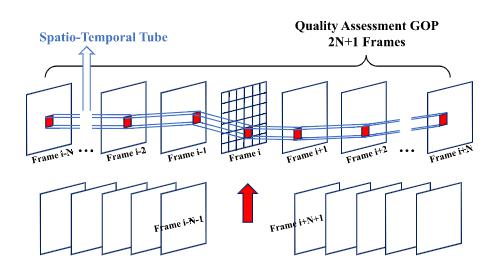 |
Subjective and Objective Video Quality Assessment of 3-D Synthesized View with Texture/Depth Compression Distortion [PDF]
Xiangkai Liu, Yun Zhang, Sudeng Hu, Sam Kwong, C.-C. Jay Kuo, and Qiang Peng IEEE Transactions on Image Processing (IEEE T-IP), Vol.24, No.12, Dec. 2015, pp.4847-4861. |
|
The quality assessment for synthesized video with texture/depth compression distortion is important for the design, optimization, and evaluation of the multi-view video plus depth (MVD)-based 3D video system. In this paper, the subjective and objective studies for synthesized view assessment are both conducted. First, a synthesized video quality database with texture/depth compression distortion is presented with subjective scores given by 56 subjects. The 140 videos are synthesized from ten MVD sequences with different texture/depth quantization combinations... | |
 |
Machine Learning Based Coding Unit Depth Decisions for Flexible Complexity Allocation in High Efficiency Video Coding [PDF]
Yun Zhang, Sam Kwong, Xu Wang, Zhaoqing Pan, Hui Yuan, and Long Xu IEEE Transactions on Image Processing (IEEE T-IP), Vol.24, No.7, July. 2015, pp.2225-2238. (SCI IF 3.625) |
|
In this paper, we propose a machine learning-based fast coding unit (CU) depth decision method for High Efficiency Video Coding (HEVC), which optimizes the complexity allocation at CU level with given rate-distortion (RD) cost constraints. First, we analyze quad-tree CU depth decision process in HEVC and model it as a three-level of hierarchical binary decision problem. Second, a flexible CU depth decision structure is presented, which allows the performances of each CU depth decision be smoothly transferred between the coding complexity and RD performance... | |
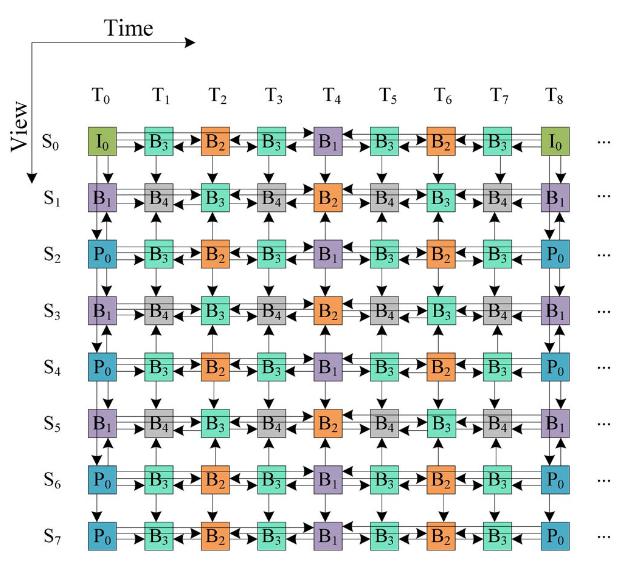 |
Efficient Motion and Disparity Estimation Optimization for Low Complexity Multiview Video Coding
[PDF]
Zhaoqing Pan, Yun Zhang, and Sam Kwong IEEE Transactions on Broadcasting (IEEE T-BC), Jan. 2015. |
|
The use of variable block-size motion estimation (ME), disparity estimation (DE), and multiple reference frames selection aims to improve the coding efficiency of multiview video coding (MVC), however, this is at the cost of high computational complexity of these advanced coding techniques, which are not suitable for real-time video broadcasting applications. In this paper, we propose an efficient ME and DE algorithm for reducing the computational complexity of MVC... | |
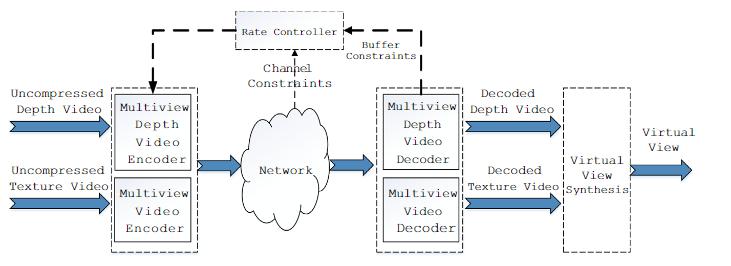 |
View Synthesis Distortion Model Based Frame Level Rate Control Optimization for Multiview Depth Video Coding
[PDF]
Xu Wang, Sam Kwong, Hui Yuan, Yun Zhang, Zhaoqing Pan Signal Processing, Elsevier, 2014. vol.112,pp.189-198, Mar. 2015 |
|
Quality of virtual view image is one of the important issues in multiview depth video coding (MDVC). When people enjoy three dimensional (3D) applications, they may have an unpleasant perceptual experience if the virtual view has low image quality. Thus, high virtual view image quality is mostly expected in the rate control optimization for MDVC with limited channel bandwidth and buffer resources. In this paper, a view synthesis distortion model is proposed first to indicate the importance of each frame in the depth video. Second, to achieve a balance between... |
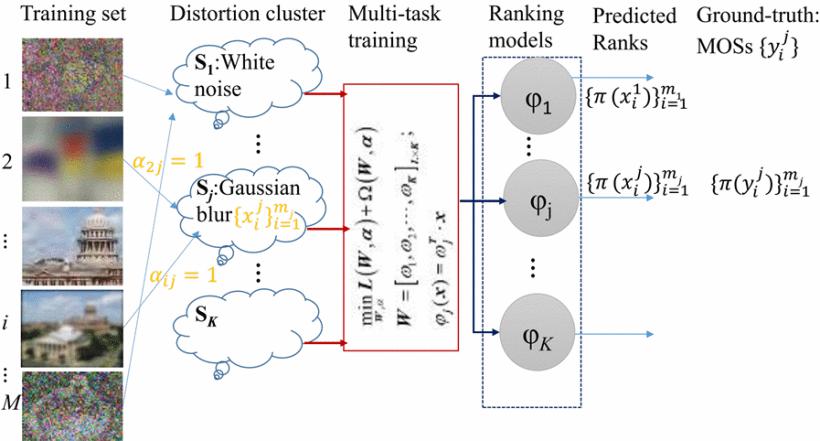 |
Mulii-task Rank Learning for Image Quality Assessment
Long Xu, Jia Li, Weisi Lin, Yongbing Zhang, Lin Ma, Yuming Fang, Yun Zhang, and Yihua Yan IEEE International Conference on Acoustics, Speech, and Signal Processing (ICASSP2015), Brisban, Australia, Apr. 19-24, 2015. |
|
In practice, multiple types of distortions are associated with an image quality degradation process. The existing machine learning (ML) based image quality assessment (IQA) approaches generally established a unified model for all distortion types, or each model is trained independently for each distortion type by using single-task learning, which lead to the poor generalization ability of the models as applied to practical image processing. There are often the underlying cross relatedness amongst these single-task learnings in IQA, which is ignored by the previous approaches... | |
 |
Binocular Combination and Fractional Differential Based 3D Image Quality Assessment
Haiyong Xu, Gangyi Jiang, Mei Yu, Yun Zhang, Ting Luo, Zongju Peng, Feng Shao 2015 7th International Workshop on Quality of Multimedia Experience (QoMEX 2015), Messinia, Greece, pp.1-5, May. 2015. |
|
Three dimensional image quality assessment (3DIQA) is an important issue for three-dimensional video technologies and faces more challenges than its two-dimensional counterparts. In this paper, a novel 3DIQA method is proposed based on human visual system considering the influence of binocular combination between the left and right views of stereo image... | |
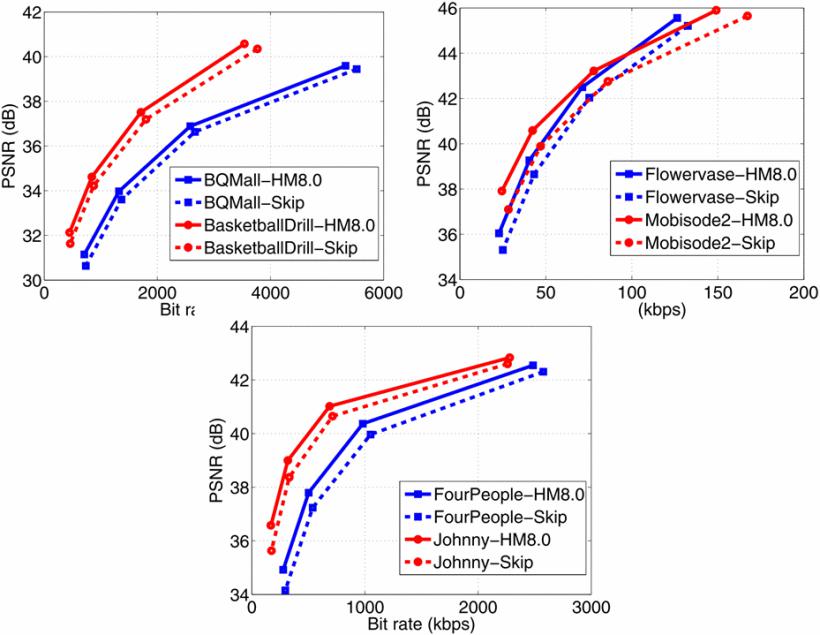 |
Fast Transform Unit Depth Decision Based on Quantized Coefficients for HEVC
Zhaoqing pan, Jianjun Lei, Yun Zhang, Wenjie Yan, Sam Kwong IEEE International Conference on Systems, Man, and Cybernetics (SMC 2015), Hong Kong, China, 2015. |
|
The quad tree structure based Transform Unit (TU) helps high efficiency video coding to improve the coding efficiency. However, the achieved coding efficiency comes at the cost of the increased computational complexity. In this paper, based on the quantizated coefficients of the TU, we propose an early termination for the quad tree... | |
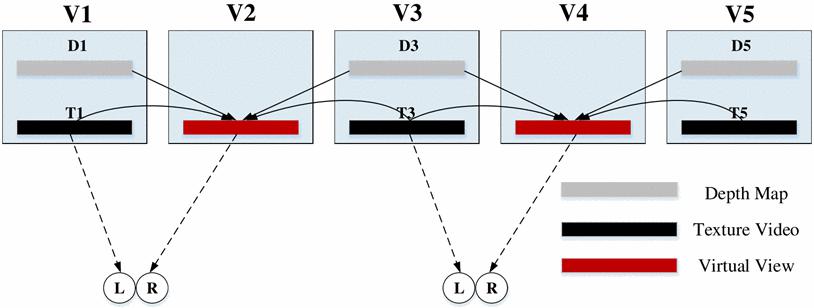 |
Smooth View Quality Oriented Bit Allocation Optimization for 3D Video Coding
Xu Wang, Sam Kwong, Wei Gao, Yu Zhou, Hui Yuan, and Yun Zhang IEEE International Conference on Systems, Man, and Cybernetics (SMC 2015), Hong Kong, China, 2015. |
|
View level bit allocation is an fundamental optimization problem in multiview video plus depth (MVD) based 3D video coding (3DVC). In this paper, we propose a smooth view quality oriented view level bit allocation framework for MVD based 3DVC. The Cauchy-density based rate-distortion model of the texture video and depth map are employed to represent the rate distortion properties. The relationship between the distortion of synthesized view and quantization step size of texture... |

